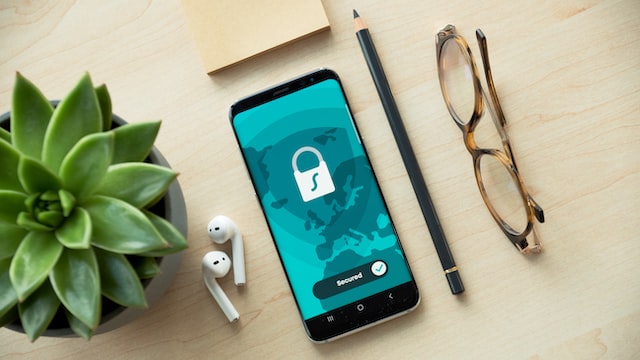
The topic of mobile security has become indisputable due to the widespread use of smart gadgets. There seems to be news of mobile security breaches almost everywhere you look. Consequently, you probably store personal information, such as your contacts, calendar, and bank account information, among others, on your phone. Hence, there’s a need to keep this data safe and secure, which means doing the same for your device.
In light of this, you may wonder, “How can I secure my smartphone?” Below are some tips on how to ensure your mobile device is uncompromised.
1. Update Your Mobile Software
Ensuring your phone is safe means more than having a locked screen. Many hacker attacks rely on flaws in mobile operating systems, which is why you always need to update your phone’s software. Updates usually include improved security patches, which protect your device from new and emerging threats. Thanks to technological advancements, you no longer need to check your phone for updates continually. You can enable automatic updates so that your device is always running on the latest software version whenever it’s available.
2. Beware of Phishing Attacks
Have you ever been a victim of phishing attacks? Phishing is an online scam where cybercriminals send emails or texts that look like they are from a legitimate source. Such sources include your bank or a company you transact with regularly. These attacks fool you into providing personal credentials, such as your credit card number or login credentials. The best defense is to be aware of the risks and know how to spot a phishing text message. If you’re unsure about your caller’s legitimacy, you can look them up on PhoneHistory or contact the organization in question directly to confirm they sent the message.
3. Use a Secure Lock Screen
Having a lock screen may seem obvious, but you will be surprised at the number of individuals who overlook these basics. Your lock screen is your first line of defense against anyone trying to access your device without permission. Most devices allow you to lock your screen with a secure PIN, password, or biometrics. Hence, keeping your data safe from prying eyes, especially when your device falls into the wrong hands. Subsequently, don’t be a victim of using simple screen lock patterns or obvious PINs, like your birthday or 1,2,3. Doing so is as good as not locking a screen because anyone can guess these things.
4. Use Encryption
Encryption is an underutilized strategy for securing your mobile device. It helps protect sensitive information, such as business emails, investments, and banking apps. When your data is encrypted, it is converted into a unique code that appears gibberish and can only be accessed by someone with the correct decryption key. Despite being a powerful tool, encryption is not foolproof. If someone gets their hands on your device, they may still be able to access your documents if they have your key. Hence, it’s prudent to keep that key secure, too; otherwise, all these efforts will be for nothing.
5. Avoid Using Public Wi-Fi
We understand how tempting it is to use free Wi-Fi, but fight the impulse! This is one of the most convenient methods for hackers to access your device and steal your data. Hackers prefer public Wi-Fi because such networks are notorious for lacking crucial security features, making their hacking job effortless. Again, anyone can set up a fake Wi-Fi network to lure you into connecting. It works magic because it is impossible to tell whether a network is legit or not just by looking at it.
So what can you do? The best option is to use your data or connect to a VPN. That way, you can be sure that your connection is secure and your data is safe.
6. Be Careful What You Click on
You should be careful about what you click on, even if it comes from a trusted source. Cybercriminals are crafty and can spoof emails and messages to make them look like they are from a legitimate source. Always take a look at the email address or phone number of the sender to see if it matches up with whom they say they are. If not, do not open it.
7. Set up Remote Wiping
Most cell phones are configured to either erase their contents after several failed attempts to access them or to erase them through a remote command. If your phone is stolen or misplaced, you will want to be able to wipe your data remotely. This way, your identity remains protected even if your device falls into the wrong hands.
8. Do not Store Sensitive Information on Your Device
Storing sensitive information on your mobile device is not wise. If your device is lost or stolen, that information could be possessed by the wrong person. Such data may include your social security number, financial information, passwords, and home address. If you absolutely must store this kind of information on your device, make sure it is encrypted. That way, even if someone does get their hands on your device, they will not be able to access your details.
9. Back Up Your Data
Backing up your data is invaluable. No matter how well you take care of your device, there is always a chance that something could happen to it, whether it is a physical accident or a virus attack. Regular backups mean you will not lose everything if something happens to your device. Whichever method you choose to back up your data, ensure you do it regularly.
10. Install a Security Software
Installing security software can help protect your device from viruses, malware, and other online threats. There are different security software options in the market, so take some time to research what is available and settle on the best option. Once you have installed it, be sure to update it on a regular basis.
Conclusion
There are several ways to keep your mobile device secure, but the best protection ultimately comes down to you and your diligence. It is up to each individual to ensure their device is safe. By following these steps, you can feel certain your mobile device is secure from any intrusion.





